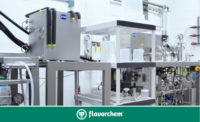GEA, Düsseldorf, Germany, said it launched its new nitrogen freezing pilot plant for bacteria, giving dairy and other food processors the opportunity to try out the new technology in their own plants before investing in production-scale equipment. By freezing bacteria into pellets before drying, GEA is now able to provide processors with greater flexibility, a higher active cell count and reduced costs through better utilization of their fermentation lines and freeze dryers.
Many dairy and other food processors, as well as suppliers of probiotic products, use live bacteria as part of their production process (e.g., in making yogurt or cheese). Traditionally, processors have kept their own strains of bacteria and transferred them from one batch to the next. However, as more specialized strains of bacteria have emerged, there is a need to distribute them more widely. This is typically done by freezing the strains to -50 degrees Celsius and then storing them under temperature-controlled conditions.
Freeze-dried bacteria have become popular because they can be transported and stored at ambient temperature and rehydrated as required. On the other hand, freeze-drying bacteria is a long process requiring several hours to freeze, then an additional 48 to 72 hours for the lyophilization process to be completed, GEA said. This ties up expensive freeze-drying equipment and limits production, GEA said.
With its new pilot plant, GEA said it is taking a different approach. The company freezes the bacteria in droplets using a liquid nitrogen bath outside the freeze-dryer, and then dries the pellets via the normal procedure.
According to GEA, this method has many significant advantages. For example, rather than freezing all of the bacteria in a single batch, it can be collected from a continuous stream, improving flexibility and equipment utilization. Fermentation and freeze-drying are separate so the freeze-dryer does not need to be available when the product is frozen: Bacteria can be stored at -50 degrees Celsius until they are required. The bacteria cell count resulting from this process is nearly double that of traditional freeze-drying techniques, and because the frozen pellets dry much more quickly than bacteria in slab form, the lyophilization process is also faster (typically 24 to 36 hours compared to up to 72 hours).
“We are absolutely committed to this technology and want our customers to have the opportunity of trying it out for themselves in their own factories,” explained Morten Pedersen, area sales manager for GEA. “The results already seen with this new pilot plant are impressive, and we’re confident that our customers will also be delighted with the results.”



